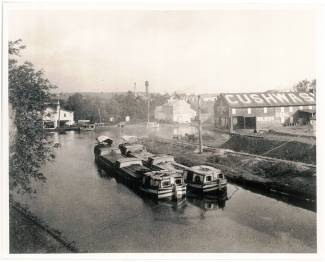Collection Name
About
In 1787, when Otho Holland Williams founded the town of Williamsport, transportation played a key role in the town’s development via river trade. It is not surprising, therefore, when the Chesapeake & Ohio Canal finally arrived nearly 50 years later that it brought a period of great prosperity to the town. When the canal opened from Cumberland in 1850, the town took on new life. The trade of Hagerstown and the Cumberland Valley that previously traveled via the National Road was diverted through Williamsport, leading to a substantial increase in activity. Two warehouses were built in Williamsport – Cushwa and Steffey and Findley – to support transportation on the canal.
However, the canal brought many trying moments to the community as well. Williamsport was hit hard by a series of cholera epidemics during the 1830s, and in 1834 riots erupted among rival Irish labor groups. The violence became so severe that a patrol checkpoint was set up on the Conococheague Aqueduct in order to keep the two groups separated. Ultimately, a peace treaty was signed, and hostilities subsided.
Following the completion of the canal, the town of Williamsport continued to prosper. In November 1873, the first passenger train of the Western Maryland Railroad reached Williamsport; the line officially opened in Williamsport on December 17, 1873. Great anticipation had accompanied the railroad's opening at the juncture of the canal and railroad. Both canal and railroad officials hoped the railroad line would provide fast and inexpensive access to Baltimore, thereby making Williamsport a regional trade center. Coal, in particular, was seen as a potentially lucrative product. Industries, such as tanning, attracted new residents to the town as did the canal itself.
When the canal was drained during the winter months, many of the boat captains made their homes in Williamsport. Though its heyday as a transportation hub and industrial center has long since passed, Williamsport continues to retain its canal town character today.
---For a map of Williamsport District see Williamsport District, 1877
Mile 99.72
Boat basins along the canal served as areas in which business between the canal boats and industry along the canal could occur without obstructing the flow of traffic along the canal. They were also places in which canal boats could dock for the night or wait for a turn through a lock or across an aqueduct. Many industries had access to boat basins such as at Antietam Village, Millers Saw Mill, Cushwa Warehouse, and many others.
